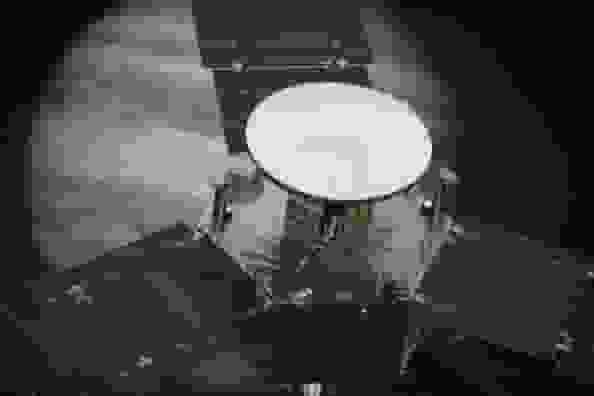The James Webb Space Telescope (JWST) and the Hubble Space Telescope are gearing up to investigate one of the most enigmatic objects in our solar system: Io, a moon of Jupiter renowned for its intense volcanic activity. What makes this partnership even more intriguing is that the data collected by these telescopes will be instrumental in guiding NASA’s Juno spacecraft during its upcoming flybys of Io.

NASA’s Juno Spacecraft, which arrived in Jupiter’s vicinity on July 4, 2016, after a 1.7 billion-mile journey has conducted multiple flybys of Jupiter and its moons including Io. (Photo: Clarksville Online)
NASA’s Juno Spacecraft to Partner with James Webb Space and Hubble Telescopes
Io, often referred to as our solar system’s most volcanic body, has long fascinated scientists with its dramatic geological phenomena. This moon, roughly the size of Earth’s moon, endures extreme volcanic eruptions that spew lava miles into its thin, dry atmosphere.
The Southwest Research Institute (SwRI) is taking the lead in unraveling the mysteries of Io including the reason behind Io’s lunar firework display. Armed with observation time granted by the Space Telescope Science Institute, SwRI researchers will use the Hubble telescope during 122 orbits around Earth to collect valuable data about Io. They will also supplement these findings with nearly five hours of observations from the JWST.
According to a published article, the project’s principal investigator, Kurt Retherford, emphasized the critical timing of this endeavor, coinciding with NASA’s Juno Spacecraft’s multiple upcoming flybys of Io. These flybys offer rare opportunities to combine both in-situ and remote observations of Io’s intricate system.
Retherford’s team aspires to gain fresh insights into Io’s dramatic volcanism, its interactions with plasma, and the populations of neutral gas and plasma in Jupiter’s extensive magnetosphere, which trigger intense auroral emissions.
READ ALSO: Ukraine’s Space Sector Hit Hard by War, Lost Partnerships Amid Ongoing Conflict
NASA’s Juno Spacecraft’s Multiple Flybys
The connection between Io’s volcanism and the IPT remains elusive, as does its influence on other bodies in the Jovian system. Researchers wonder about the transport of sulfur from Io to Europa’s surface and how Io’s auroral features compare to those on Earth and Jupiter.
To unravel these mysteries, the SwRI team believes in approaching the Jovian system holistically, requiring more data than NASA’s Juno Spacecraft despite its impressive capabilities, can provide alone.
NASA’s Juno Spacecraft, which arrived in Jupiter’s vicinity on July 4, 2016, after a 1.7 billion-mile journey has conducted multiple flybys of Jupiter and its moons including Io.
On September 20, NASA’s Juno Spacecraft will make a significant, more distant pass by Io, a moment of particular interest to the SwRI team. This flyby will be strategically timed to allow simultaneous observations by Hubble and the JWST, marking a historic moment in the exploration of Jupiter’s volcanic moon.
READ ALSO: Meet Sasha the Space Sloth, Now the Fastest on SpaceX’s Crew-7 Mission!




![Tyson Foods Plant [Photo: Food Manufacturing]](https://southarkansassun.com/wp-content/uploads/2023/08/iStock_1185520857__1_.5e441daa51cca-600x337.jpg)







![Silverado Senior Living Management Inc. [Photo: Los Angeles Times]](https://southarkansassun.com/wp-content/uploads/2023/10/download-6-4-600x337.jpg)

![China's Wuhan Institute of Virology [Photo: Nature]](https://southarkansassun.com/wp-content/uploads/2023/09/d41586-021-01529-3_19239608-600x337.jpg)
















